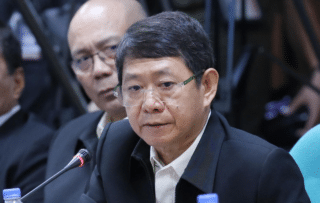From the World Bank (WB) Atlas of Sustainable Development Goal 4 (Education), the Philippines is classified as a low-middle-income country (LMIC) with $3,350 GNI per capita and 49.8 percent share of internet users. Despite this, our education system resembles those of poorer African nations, evidenced by the alarming statistics: we had the one of the highest number of days of school closures during the COVID-19 pandemic (380 days compared to the global average of 199), and we suffer from the worst learning poverty, with almost 91 percent of children unable to read and understand a simple text by age 10 (the LMIC average is 77 percent).
I remember that former education secretary Leonor Briones demanded an apology from the WB for reporting the above unflattering data when it was her administration that decided to use English and computer-based exams for Southeast Asia Primary Learning Metrics (which provided the basis for learning poverty rates). Years later, the Second Congressional Commission on Education (EdCom II) report highlighted a mismatch in the language used for assessments. New Education Secretary Sonny Angara also noted the difficulties students face with computer-based international assessments.
Moreover, Briones did not persuade then President Rodrigo Duterte to order the reopening of schools even when COVID-19 rates were low. Schools in COVID-free areas without electricity or internet, in small islands and mountain-top villages, remained closed. Consequently, the Philippines ranked third highest globally in terms of the longest school closure, alongside Uganda and Panama. The prolonged school closures, especially in areas with no electricity and internet (around 20 percent of total schools), combined with the culture of mass promotions, have caused serious learning losses that must be addressed.
I hope the new administration will develop more valid methods to measure learning outcomes and be willing to disclose the results to the public. An improved design and administration of the National Achievement Test could generate trustworthy data to gauge educational progress that will inform policies and programs. Personally, I am interested to know the baseline and end-line results of the Comprehensive Rapid Literacy Assessment that was administered in various places. I think this simple literacy assessment will tell us a more accurate number of struggling readers (since the test was provided in the learner’s L1 or Filipino).
It’s not just about reversing learning loss among the enrolled students. The WB has also reported a significant number of school-deprived or out-of-school Filipino children (5 percent of elementary-age pupils and more among the high-school-age group). It’s crucial that these children be identified and brought back to school. If that’s not possible, we must ensure they are provided with alternative modes of schooling, emphasizing the importance of flexibility and accessibility of education for everyone.
Maria Mercedes “Ched” E. Arzadon, associate professor, University of the Philippines Diliman



